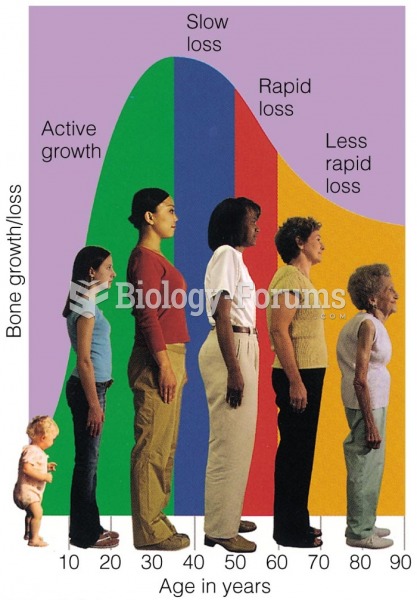|
|
|
Everyone has one nostril that is larger than the other.
The heart is located in the center of the chest, with part of it tipped slightly so that it taps against the left side of the chest.
A seasonal flu vaccine is the best way to reduce the chances you will get seasonal influenza and spread it to others.
Each year in the United States, there are approximately six million pregnancies. This means that at any one time, about 4% of women in the United States are pregnant.
Stevens-Johnson syndrome and Toxic Epidermal Necrolysis syndrome are life-threatening reactions that can result in death. Complications include permanent blindness, dry-eye syndrome, lung damage, photophobia, asthma, chronic obstructive pulmonary disease, permanent loss of nail beds, scarring of mucous membranes, arthritis, and chronic fatigue syndrome. Many patients' pores scar shut, causing them to retain heat.







